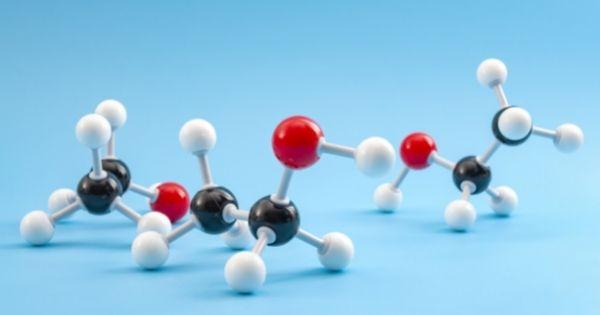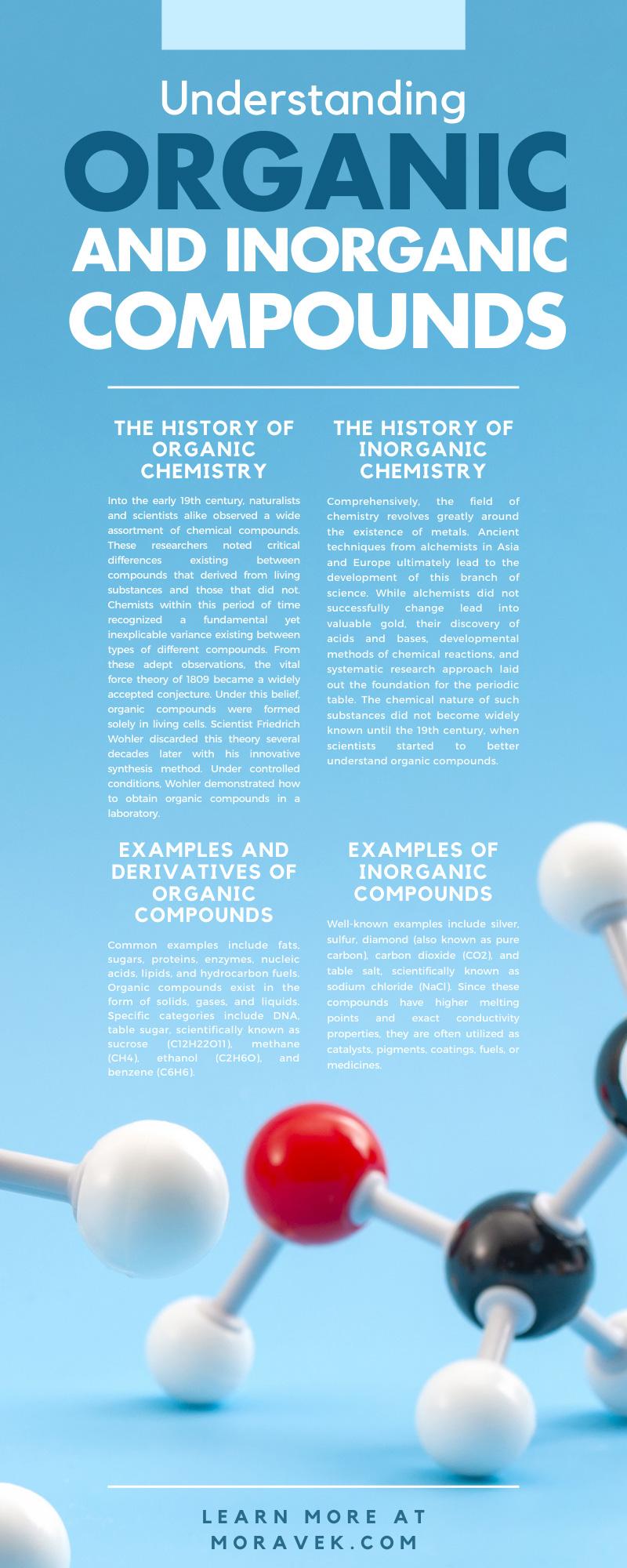
In relative terminology, the word organic refers to anything that derives from or relates to living matter. Conversely, its antonym inorganic relates to anything not deriving from or consisting of living matter. This definition holds true within the scientific field of biology, but modern chemistry is a diverse subject. The essential basis of chemistry revolves around a dynamic duo—namely, that of organic and inorganic compounds. Scientifically, two distinct disciplines exist because of these divergent facets of matter-examining chemistry—that of organic chemistry and inorganic chemistry.
The primary difference between these opposite disciplines is their field of study. To generalize the variance, organic chemistry involves the study of living compounds containing carbon atoms, whereas inorganic chemistry involves the study of mainly non-carbon compounds obtained from non-living things. Scientists principally regard substances that do not fall directly into the definition of organic as inorganic.
Within this structural framework of chemical compounds, organic chemists study organic molecules and their innate reactions. By contrast, inorganic chemists study mineral or human-made reactions. Such schematic categorizing may appear simple, but the historical background behind the clear-cut distinction is far more complex. For your consideration, let’s examine compound characteristics closer for a greater understanding of organic and inorganic compounds. This awareness provides further insight into modern chemical applications in nuclear medicine and general healthcare.
The History of Organic Chemistry
Into the early 19th century, naturalists and scientists alike observed a wide assortment of chemical compounds. These researchers noted critical differences existing between compounds that derived from living substances and those that did not. Chemists within this period of time recognized a fundamental yet inexplicable variance existing between types of different compounds. From these adept observations, the vital force theory of 1809 became a widely accepted conjecture.
Jons Berzelius proposed this vitalism theory. He was also the first individual to use the term organic chemistry, referring to the study of compounds originating from biological sources. The vital force theory proposed that a vital force—or a life force—existed solely within the presence of organic materials, such as the bodies of living animals and plants. Under this belief, organic compounds were formed solely in living cells. Therefore, preparing such compounds in a laboratory was an impossibility.
Scientist Friedrich Wohler discarded this theory several decades later with his innovative synthesis method. Under controlled conditions, Wohler demonstrated how to obtain organic compounds in a laboratory. This “in-vitro” synthesis of organic matter proved to be a pivotal biochemistry discovery for further studies, conceptualizing the modern organic chemistry field.
Examples and Derivatives of Organic Compounds
Although organic chemistry was initially defined as the chemistry of biological, existing molecules, the branch has since defined its scope to refer to the specifications of carbon compounds and their derivatives. Essentially, organic compounds are made up of carbon as their core component.
Carbon compounds with a non-biological origin are nonetheless relevant to the field of organic chemistry. Yet, keep in mind that the mere presence of the element does automatically indicate that the compound itself is organic. Organic compounds are also invariably associated with hydrogen, as they are known to form covalent bonds. Carbon atoms fuse together with hydrogen atoms to form hydrocarbons.
Inorganic compounds contrarily do not have the above idiosyncratic characteristics. Once again, any molecules relatively associated with living beings are regarded as organic. These typically result from inherent organism activities and bodily processes. Common examples include fats, sugars, proteins, enzymes, nucleic acids, lipids, and hydrocarbon fuels. Organic compounds exist in the form of solids, gases, and liquids. Specific categories include DNA, table sugar, scientifically known as sucrose (C12H22O11), methane (CH4), ethanol (C2H6O), and benzene (C6H6).
The History of Inorganic Chemistry
Comprehensively, the field of chemistry revolves greatly around the existence of metals. Ancient techniques from alchemists in Asia and Europe ultimately lead to the development of this branch of science. While alchemists did not successfully change lead into valuable gold, their discovery of acids and bases, developmental methods of chemical reactions, and systematic research approach laid out the foundation for the periodic table.
The chemical nature of such substances did not become widely known until the 19th century, when scientists started to better understand organic compounds. Since then, inorganic chemists study the behavior of inorganic elements formed by non-living processes and work towards developing applicatory methodology or performing research on how these compounds can be effectively modified and utilized in industry.
Examples of Inorganic Compounds
Understanding organic and inorganic compounds is straightforward when recalling that inorganic compounds lack carbon-hydrogen bonds. Inorganic molecules consist of metals, salts, minerals, single elements, and any carbon compounds not linked to hydrogen. Well-known examples include silver, sulfur, diamond (also known as pure carbon), carbon dioxide (CO2), and table salt, scientifically known as sodium chloride (NaCl). Since these compounds have higher melting points and exact conductivity properties, they are often utilized as catalysts, pigments, coatings, fuels, or medicines.
Applications in the Pharmaceutical Industry
Each of these chemistry fields has recent relevance in our world and will continue to play an influential scenic role in the future. One of the most active chemistry subfields today is the branch of organic chemistry. Past experimental results have made us aware of the sequencing of changes occurring throughout reactions and synthesis. Due to the pertinence and utility of this biochemistry, valuable molecular applications appear in both industry and technology.
Supplementarily, the production of radioisotopic compounds of inorganic elements is critical to nuclear medicine and sectors of the healthcare industry. This subfield of chemistry remains relevant in the development of radiopharmaceuticals for therapeutic and diagnostic applications. The manufacturing of radiolabeled compounds for drug research, development in clinical trials, and eventual production is an equivalently complex process. Radiochemists must utilize proper knowledge, techniques, and expertise to produce high-quality products at set standards.
Moravek is a GMP-certified manufacturer for the pharmaceutical industry. We are a trusted contract manufacturing organization that offers skilled custom synthesis of radiolabeled carbon-14 compounds. As a facility with extensive experience in compound radiosynthesis, purification, and analysis, our services are readily available to support any stage of the drug development process. Our team of chemists has an extensive range of experience in various subfields, producing radiolabeled products and providing organic synthesis chemistry services. Moravek designs effective campaigns for clients to meet FDA regulatory requirements and achieve chemical research project objectives.

